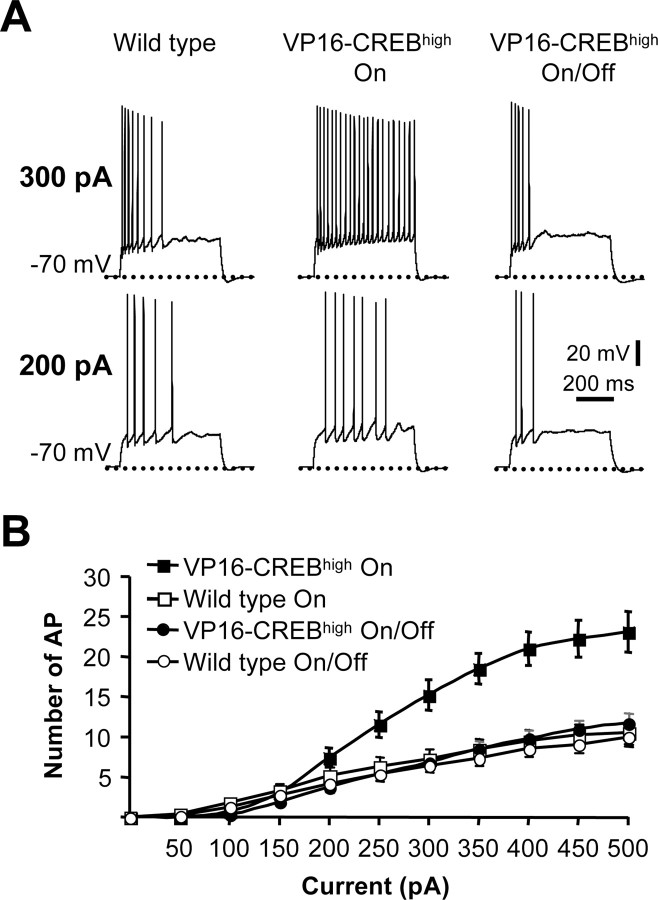Figure 1.
Neuronal excitability is increased in VP16–CREB-expressing neurons. A, Representative CA1 pyramidal neuron response to 200 and 300 pA depolarizing pulse in a wild-type mouse (left), in a VP16–CREBhigh mouse (middle), and in a VP16–CREBhigh mouse that expressed the transgene for 10 d before turning off transgene expression for 10 additional days (right). In both experiments, transgene expression was turned on when the mice were 4 weeks old. Note the lack of spike frequency adaptation in CA1 VP16–CREB-expressing neurons. B, Average number of AP triggered in response to increasing depolarizing currents in neurons from VP16–CREBhigh (n = 22) and from wild-type littermate (n = 16) mice 10 d after inducing transgene expression (VP16-CREB On). This effect was completely reversed 10 d after turning off again transgene expression with dox (VP16–CREB On/Off; p = 0.22; n = 22).

